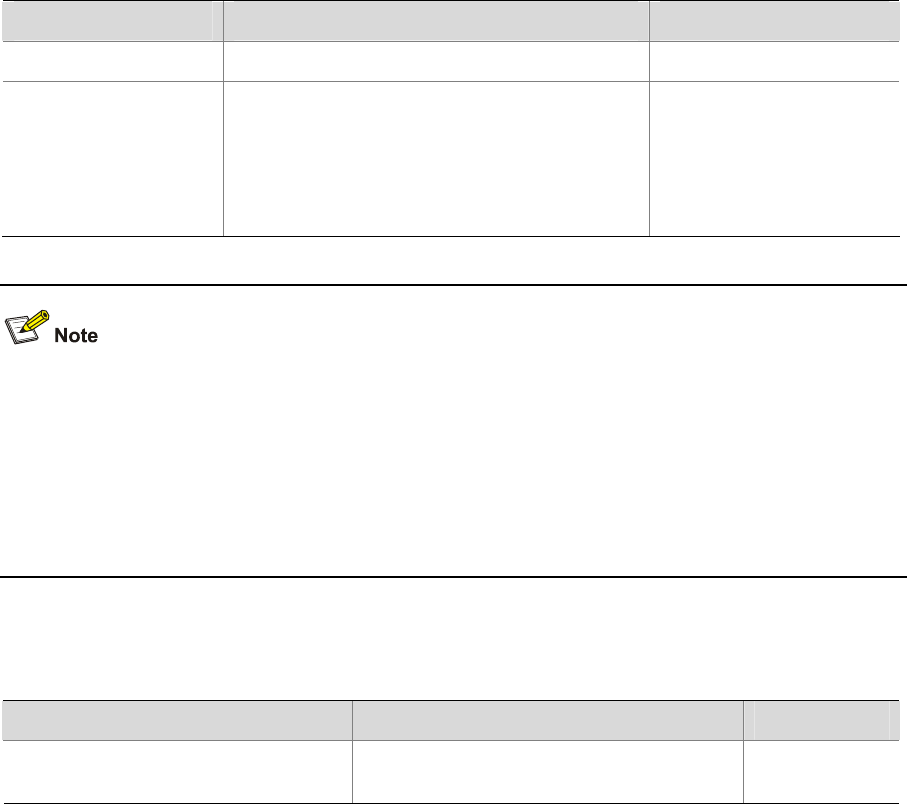
2-2
Default Route
To avoid too large a routing table, you can configure a default route.
When the destination address of a packet fails to match any entry in the routing table,
z If there is default route in the routing table, the default route will be selected to forward the packet.
z If there is no default route, the packet will be discarded and an ICMP Destination Unreachable or
Network Unreachable packet will be returned to the source.
A default route can be manually configured or generated by some dynamic routing protocols, such as
OSPF and RIP.
Static Route Configuration
Configuration Prerequisites
Before configuring a static route, perform the following tasks:
z Configuring the physical parameters of related interfaces
z Configuring IP addresses for related interfaces
Configuring a Static Route
Follow these steps to configure a static route:
To do... Use the command... Remarks
Enter system view
system-view
—
Configure a static
route
ip route-static ip-address { mask |
mask-length } { interface-type
interface-number | next-hop } [ preference
preference-value ] [ reject | blackhole ]
[ detect-group group number ] [ description
text ]
Required
By default, the system
can obtain the route to the
subnet directly connected
to the router.
z Use the ip route-static command to configure a default route by setting the destination IP address
and the mask to 0.0.0.0.
z Avoid configuring the next hop address of a static route to the address of an interface on the local
switch.
z Different preferences can be configured to implement flexible route management policies.
z For automatic detection information, refer to the part discussing Auto Detect.
Displaying and Maintaining Static Routes
To do... Use the command... Remarks
Display the current configuration
information
display current-configuration
Available in
any view


















